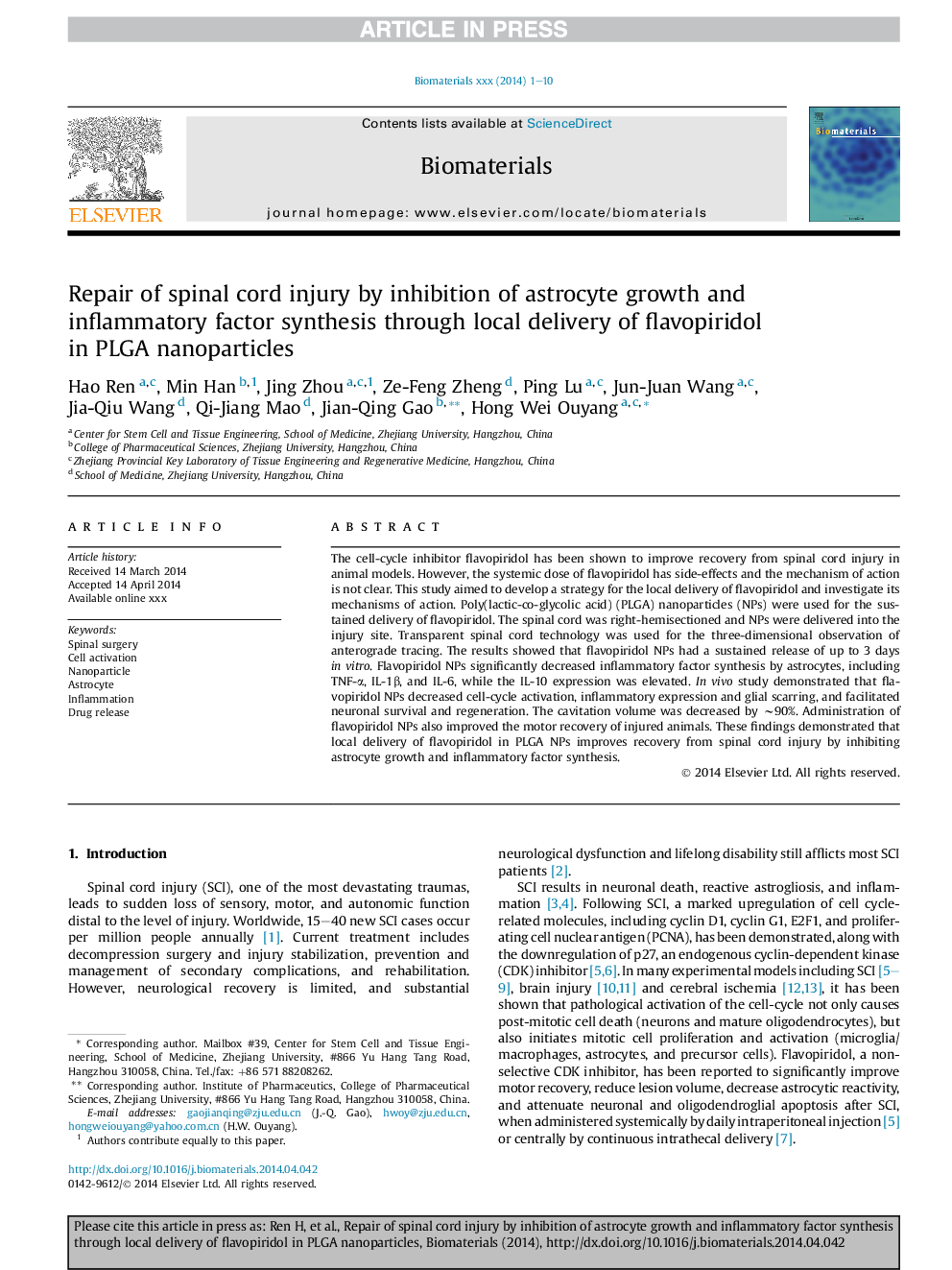| Article ID | Journal | Published Year | Pages | File Type |
|---|---|---|---|---|
| 10227666 | Biomaterials | 2014 | 10 Pages |
Abstract
The cell-cycle inhibitor flavopiridol has been shown to improve recovery from spinal cord injury in animal models. However, the systemic dose of flavopiridol has side-effects and the mechanism of action is not clear. This study aimed to develop a strategy for the local delivery of flavopiridol and investigate its mechanisms of action. Poly(lactic-co-glycolic acid) (PLGA) nanoparticles (NPs) were used for the sustained delivery of flavopiridol. The spinal cord was right-hemisectioned and NPs were delivered into the injury site. Transparent spinal cord technology was used for the three-dimensional observation of anterograde tracing. The results showed that flavopiridol NPs had a sustained release of up to 3 days in vitro. Flavopiridol NPs significantly decreased inflammatory factor synthesis by astrocytes, including TNF-α, IL-1β, and IL-6, while the IL-10 expression was elevated. In vivo study demonstrated that flavopiridol NPs decreased cell-cycle activation, inflammatory expression and glial scarring, and facilitated neuronal survival and regeneration. The cavitation volume was decreased by â¼90%. Administration of flavopiridol NPs also improved the motor recovery of injured animals. These findings demonstrated that local delivery of flavopiridol in PLGA NPs improves recovery from spinal cord injury by inhibiting astrocyte growth and inflammatory factor synthesis.
Related Topics
Physical Sciences and Engineering
Chemical Engineering
Bioengineering
Authors
Hao Ren, Min Han, Jing Zhou, Ze-Feng Zheng, Ping Lu, Jun-Juan Wang, Jia-Qiu Wang, Qi-Jiang Mao, Jian-Qing Gao, Hong Wei Ouyang,
